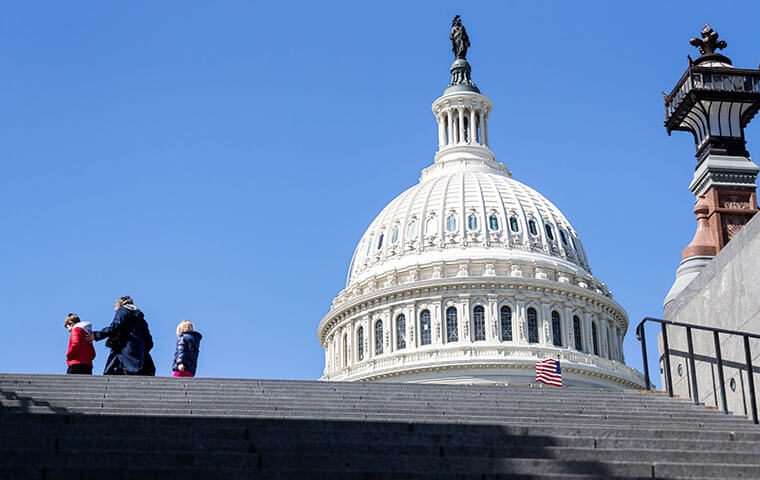 The house recently passed a bill requiring steps to consolidate offices and sell off or stop leasing space that was less than 60 percent occupied. Image: Allison Bailey/NurPhoto/Shutterstock
By: FEDweek Staff
The house recently passed a bill requiring steps to consolidate offices and sell off or stop leasing space that was less than 60 percent occupied. Image: Allison Bailey/NurPhoto/Shutterstock
By: FEDweek StaffThe budget measure enacted last weekend wrapping up funding for the rest of the current fiscal year requires greater scrutiny of agency telework practices, although it stops short of ordering agencies to have more employees working onsite and more often.
The measure requires OMB to provide within three months agency return-to-office plans submitted to it; for each agency, the average number and percent of employees present in the office on a given day during any two-week pay period during that time; and each agency’s most recent policy on telework, including any agreement with employee unions.
Also: a description of each agency’s effort to reduce its office footprint if their average office space utilization rate is less than 60 percent, based on a benchmark of 150 usable square feet per person; and the cost of total office space, average office space utilization rate, and estimated cost of underutilized space.
An earlier House-passed version of the general government appropriations bill, one of six in the new package, would have rolled back telework to pre-pandemic levels while allowing agencies to increase it only by making a business case in favor of it. The House had passed similar language as a separate bill, and more recently passed yet another bill, requiring that steps be taken to consolidate offices and sell off or stop leasing space that was less than 60 percent occupied for more than a year.
The Senate did not take up any of those measures although its version of the general government bill would have required several agencies to report on their telework practices.
While the final version does not go as far as did the House language, federal employee organizations still objected. Said the AFGE union said that “lawmakers are playing political games with arbitrary, governmentwide caps in an attempt to punish the same federal workforce that performed heroically throughout the pandemic by taking up telework to keep the government running when Americans needed them the most.”
“Congress should embrace telework and remote work for what it is – a vital workplace flexibility that improves employee morale and productivity, and helps agencies recruit and retain the most qualified employees to the federal government,” it said.
Senate Eyes Vote to Pay Federal Employees Working Unpaid
Series of Bills Offered to Address Shutdown’s Impact on Employees
Public Starting to Feel Impact of Shutdown, Survey Shows
OPM Details Coverage Changes, Plan Dropouts for FEHB/PSHB in 2026
Does My FEHB/PSHB Plan Stack Up? Here’s How to Tell
2025 TSP Rollercoaster and the G Fund Merry-go-Round
See also,
TSP Takes Step toward Upcoming In-Plan Roth Conversions
5 Steps to Protect Your Federal Job During the Shutdown
Over 30K TSP Accounts Have Crossed the Million Mark in 2025

